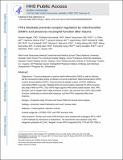| dc.contributor.author | Itagaki, Kiyoshi | |
| dc.contributor.author | Kaczmarek, Elzbieta | |
| dc.contributor.author | Kwon, Woon Yong | |
| dc.contributor.author | Chen, Li | |
| dc.contributor.author | Vlková, Barbora | |
| dc.contributor.author | Zhang, Quanzhi | |
| dc.contributor.author | Riça, Ingred | |
| dc.contributor.author | Yaffe, Michael B | |
| dc.contributor.author | Campbell, Yan | |
| dc.contributor.author | Marusich, Michael F | |
| dc.contributor.author | Wang, Ji Ming | |
| dc.contributor.author | Gong, Wang-Hua | |
| dc.contributor.author | Gao, Ji-Liang | |
| dc.contributor.author | Jung, Françoise | |
| dc.contributor.author | Douglas, Garry | |
| dc.contributor.author | Otterbein, Leo E | |
| dc.contributor.author | Hauser, Carl J | |
| dc.date.accessioned | 2021-10-27T20:04:53Z | |
| dc.date.available | 2021-10-27T20:04:53Z | |
| dc.date.issued | 2020 | |
| dc.identifier.uri | https://hdl.handle.net/1721.1/134410 | |
| dc.description.abstract | Copyright © 2019 by the Society of Critical Care Medicine and Wolters Kluwer Health, Inc. All Rights Reserved. Objectives: Trauma predisposes to systemic sterile inflammation (systemic inflammatory response syndrome) as well as infection, but the mechanisms linking injury to infection are poorly understood. Mitochondrial debris contains formyl peptides. These bind formyl peptide receptor-1, trafficking neutrophils to wounds, initiating systemic inflammatory response syndrome, and wound healing. Bacterial formyl peptides, however, also attract neutrophils via formyl peptide receptor-1. Thus, mitochondrial formyl peptides might suppress neutrophils antimicrobial function. Also, formyl peptide receptor-1 blockade used to mitigate systemic inflammatory response syndrome might predispose to sepsis. We examined how mitochondrial formyl peptides impact neutrophils functions contributing to antimicrobial responses and how formyl peptide receptor-1 antagonists affect those functions. Design: Prospective study of human and murine neutrophils and clinical cohort analysis. Setting: University research laboratory and level 1 trauma center. Patients: Trauma patients, volunteer controls. Animal Subjects: C57Bl/6, formyl peptide receptor-1, and formyl peptide receptor-2 knockout mice. Interventions: Human and murine neutrophils functions were activated with autologous mitochondrial debris, mitochondrial formyl peptides, or bacterial formyl peptides followed by chemokines or leukotrienes. The experiments were repeated using formyl peptide receptor-1 antagonist cyclosporin H, “designer” human formyl peptide receptor-1 antagonists (POL7178 and POL7200), or anti-formyl peptide receptor-1 antibodies. Mouse injury/lung infection model was used to evaluate effect of formyl peptide receptor-1 inhibition. Measurements and Main Results: Human neutrophils cytosolic calcium, chemotaxis, reactive oxygen species production, and phagocytosis were studied before and after exposure to mitochondrial debris, mitochondrial formyl peptides, and bacterial formyl peptides. Mitochondrial formyl peptide and bacterial formyl peptides had similar effects on neutrophils. Responses to chemokines and leukotrienes were suppressed by prior exposure to formyl peptides. POL7200 and POL7178 were specific antagonists of human formyl peptide receptor-1 and more effective than cyclosporin H or anti-formyl peptide receptor-1 antibodies. Formyl peptides inhibited mouse neutrophils responses to chemokines only if formyl peptide receptor-1 was present. Formyl peptide receptor-1 blockade did not inhibit neutrophils bacterial phagocytosis or reactive oxygen species production. Cyclosporin H increased bacterial clearance in lungs after injury. Conclusions: Formyl peptides both activate and desensitize neutrophils. Formyl peptide receptor-1 blockade prevents desensitization, potentially both diminishing systemic inflammatory response syndrome and protecting the host against secondary infection after tissue trauma or primary infection. | |
| dc.language.iso | en | |
| dc.publisher | Ovid Technologies (Wolters Kluwer Health) | |
| dc.relation.isversionof | 10.1097/CCM.0000000000004094 | |
| dc.rights | Creative Commons Attribution-Noncommercial-Share Alike | |
| dc.rights.uri | http://creativecommons.org/licenses/by-nc-sa/4.0/ | |
| dc.source | PMC | |
| dc.title | Formyl Peptide Receptor-1 Blockade Prevents Receptor Regulation by Mitochondrial Danger-Associated Molecular Patterns and Preserves Neutrophil Function After Trauma | |
| dc.type | Article | |
| dc.contributor.department | Koch Institute for Integrative Cancer Research at MIT | |
| dc.contributor.department | Massachusetts Institute of Technology. Department of Biology | |
| dc.relation.journal | Critical Care Medicine | |
| dc.eprint.version | Author's final manuscript | |
| dc.type.uri | http://purl.org/eprint/type/JournalArticle | |
| eprint.status | http://purl.org/eprint/status/PeerReviewed | |
| dc.date.updated | 2021-08-04T15:29:46Z | |
| dspace.orderedauthors | Itagaki, K; Kaczmarek, E; Kwon, WY; Chen, L; Vlková, B; Zhang, Q; Riça, I; Yaffe, MB; Campbell, Y; Marusich, MF; Wang, JM; Gong, W-H; Gao, J-L; Jung, F; Douglas, G; Otterbein, LE; Hauser, CJ | |
| dspace.date.submission | 2021-08-04T15:29:48Z | |
| mit.journal.volume | 48 | |
| mit.journal.issue | 2 | |
| mit.license | OPEN_ACCESS_POLICY | |
| mit.metadata.status | Authority Work and Publication Information Needed | |
